Introduction
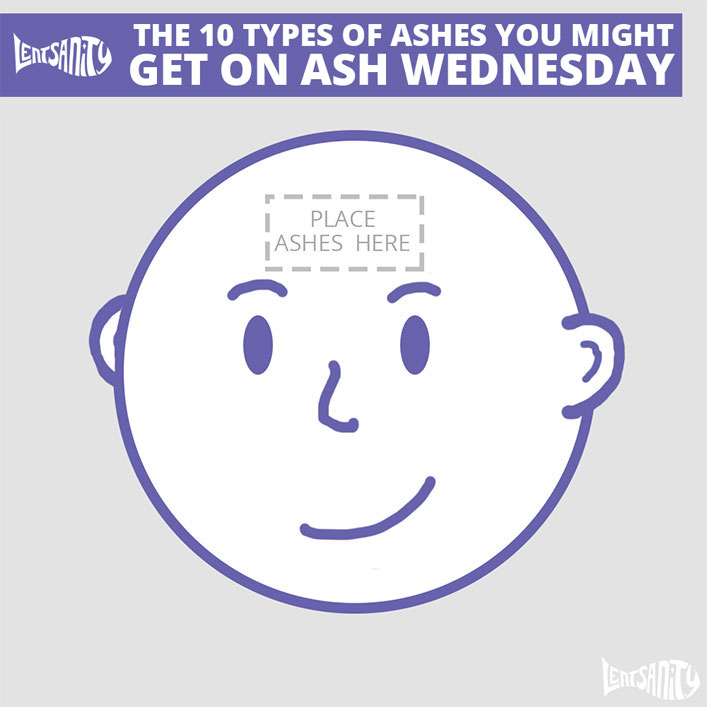
One of the most visible aspects of Lent is how it begins: Ash Wednesday. This is the day we all see who is getting ready to enter in the season of Lent by spotting who has ash on their forehead. This guide will help you identify the different types of ashes you may encounter.
The “Cross”
A true classic. The most widely depicted ash type in media. The Cross is probably the most common type of ashes, and also the starting point and root ash type of many others. Frequently, The Cross is attempted only to turn out as one of its many derivatives.
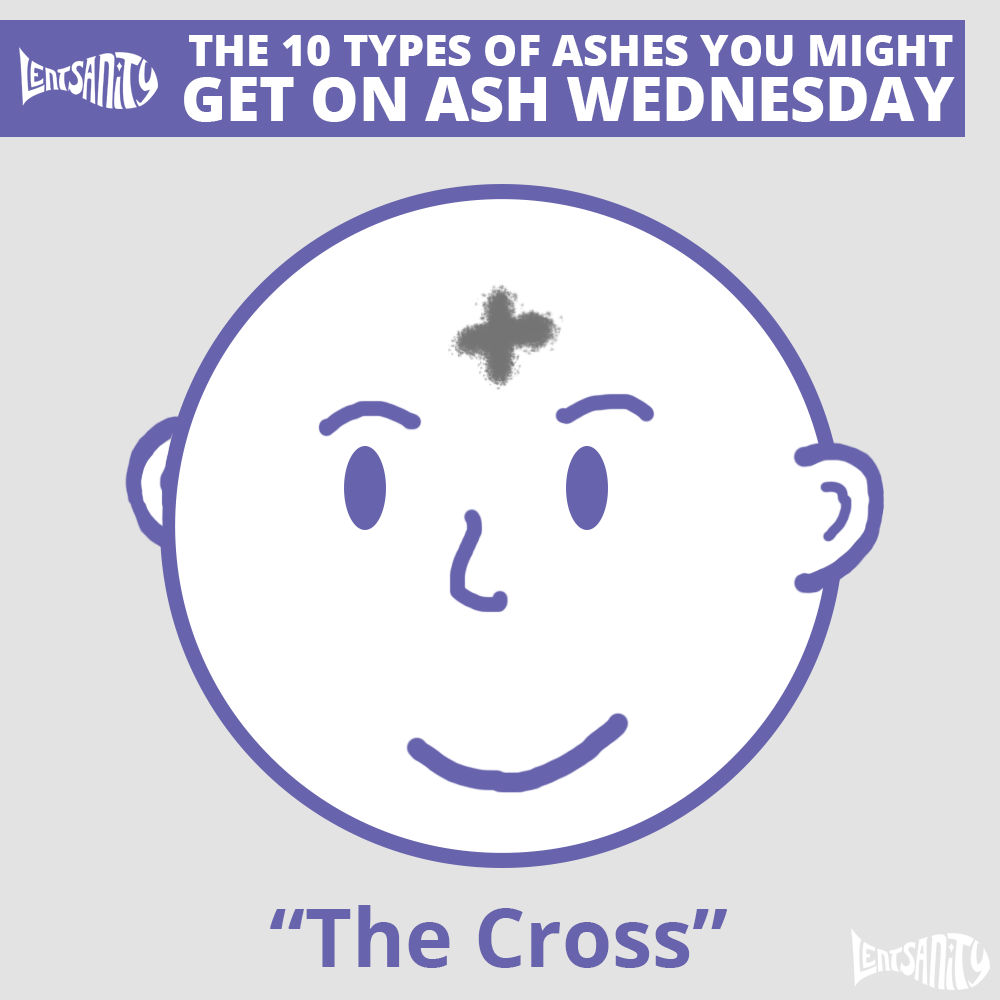
The “Thumbprint”
One of the few ash types not derived from The Cross. Often used when ash supplies are running low or time is in short supply due to its economic use of ashes and quick application time. Also referred to as “The Catholic Bindi” due to its resemblance to the traditional Hindu forehead mark or “The Missed a Spot,” as this is the ash type most frequently confused for a spot of dirt on the forehead left behind from improper face washing technique.
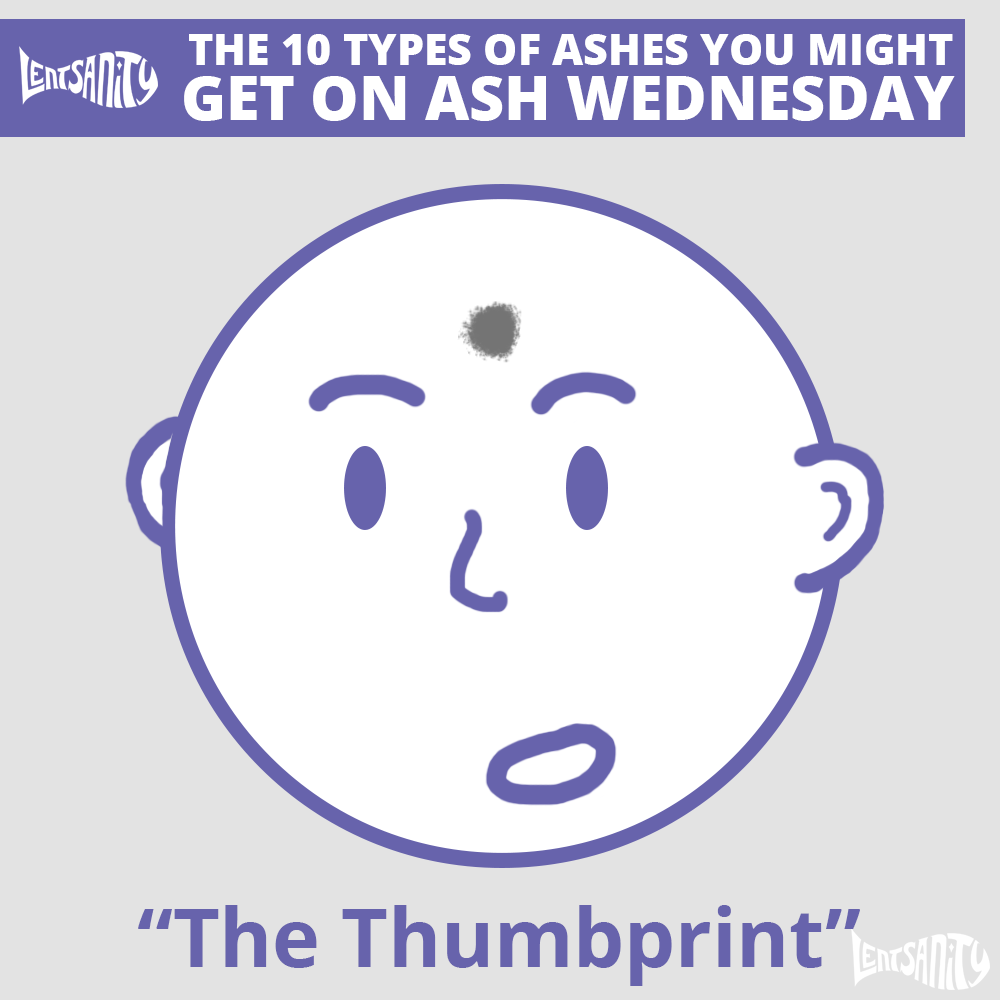
The “Double Wide”
Simply put, a Cross ash type, whose horizontal line is much longer than proportion allows. The Double Wide can vary from only slightly out of proportion to covering the width of the entire forehead.

The “Simba”
A Cross or Double Wide with an extremely small or even nonexistent vertical line. So named for its resemblance to the mark young Simba receives in the opening scene of the 1994 Disney animated classic “The Lion King.”
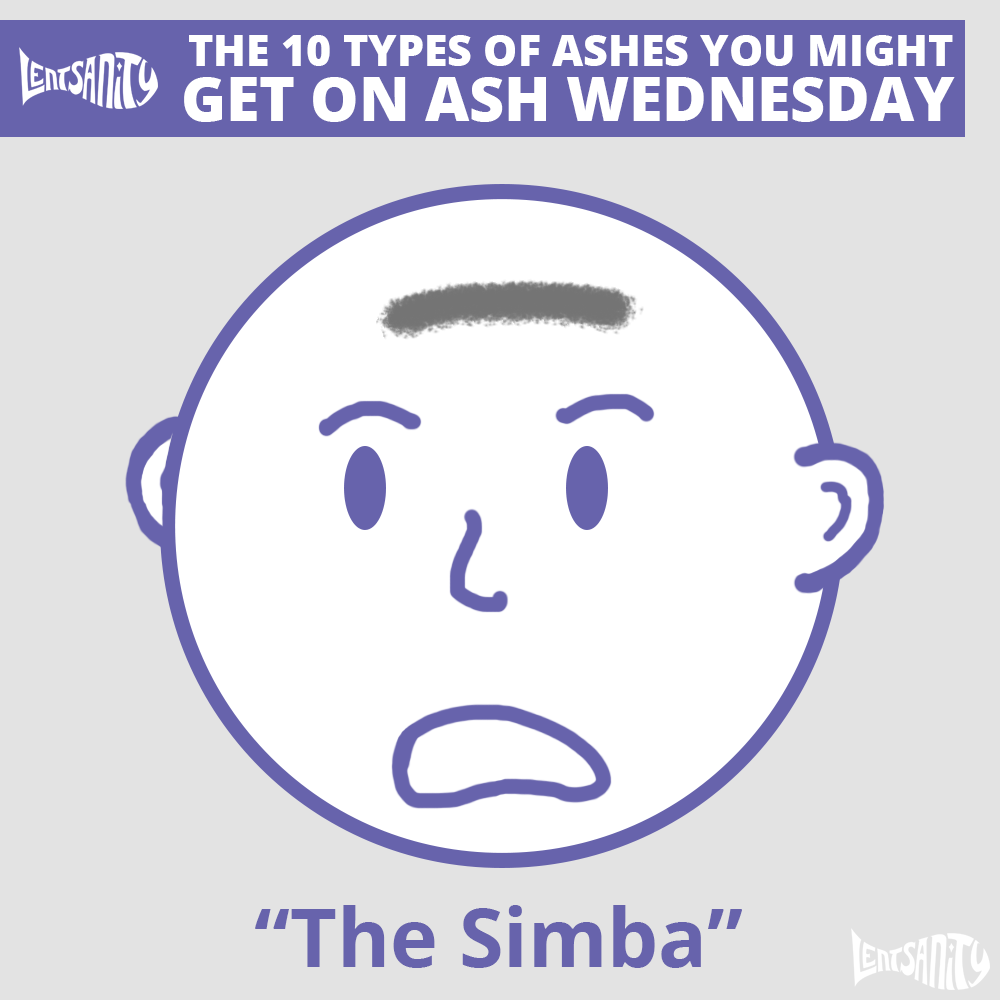
The “Unibrow”
A Simba or Double wide whose application has a lower latitudinal application than desired. This lower than average location connects the two eyebrows and simulates the appearance of one brow, particularly from mid- to long-range viewing. Consequently, this is the ash type that is most helpful for growing in humility.
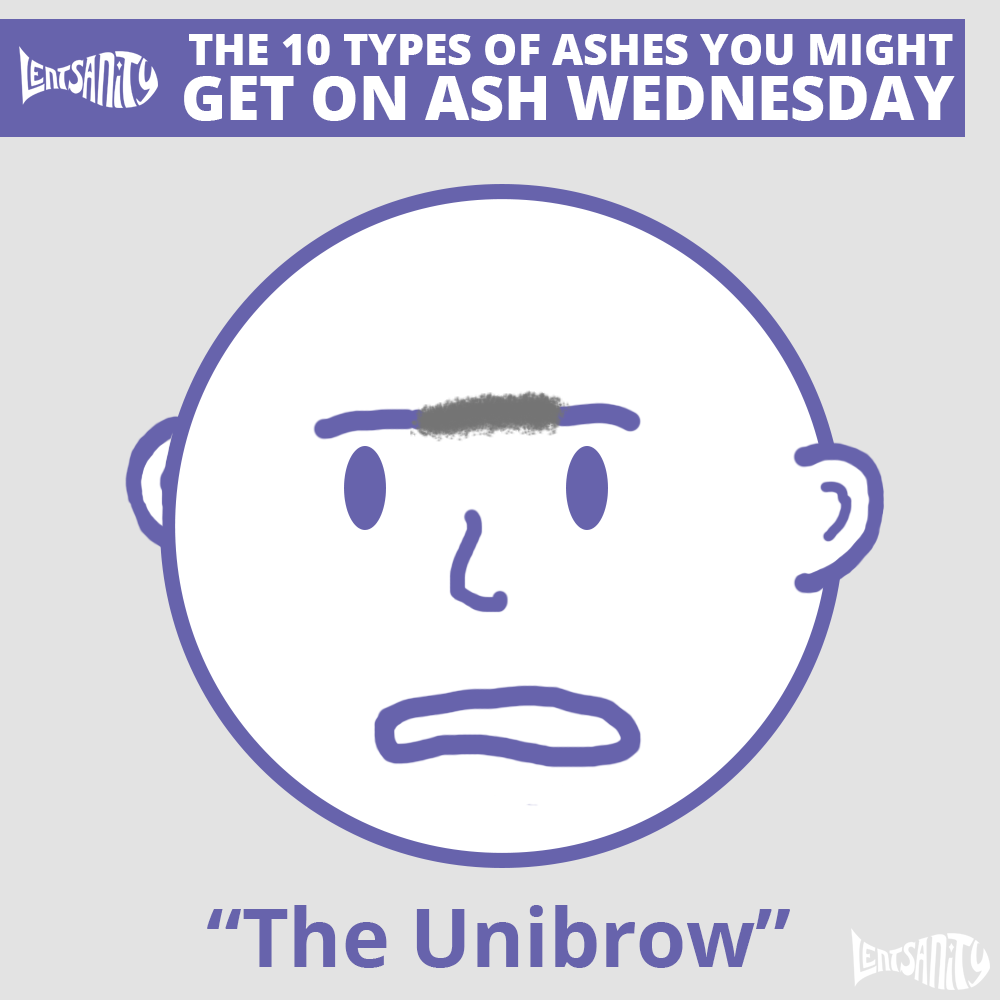
“The X Marks the Spot”
The classic cross ash type tilted anywhere from 30-70 degrees. This may occur when the one applying the ashes is distracted or the receiver tilts their head a split second before application.
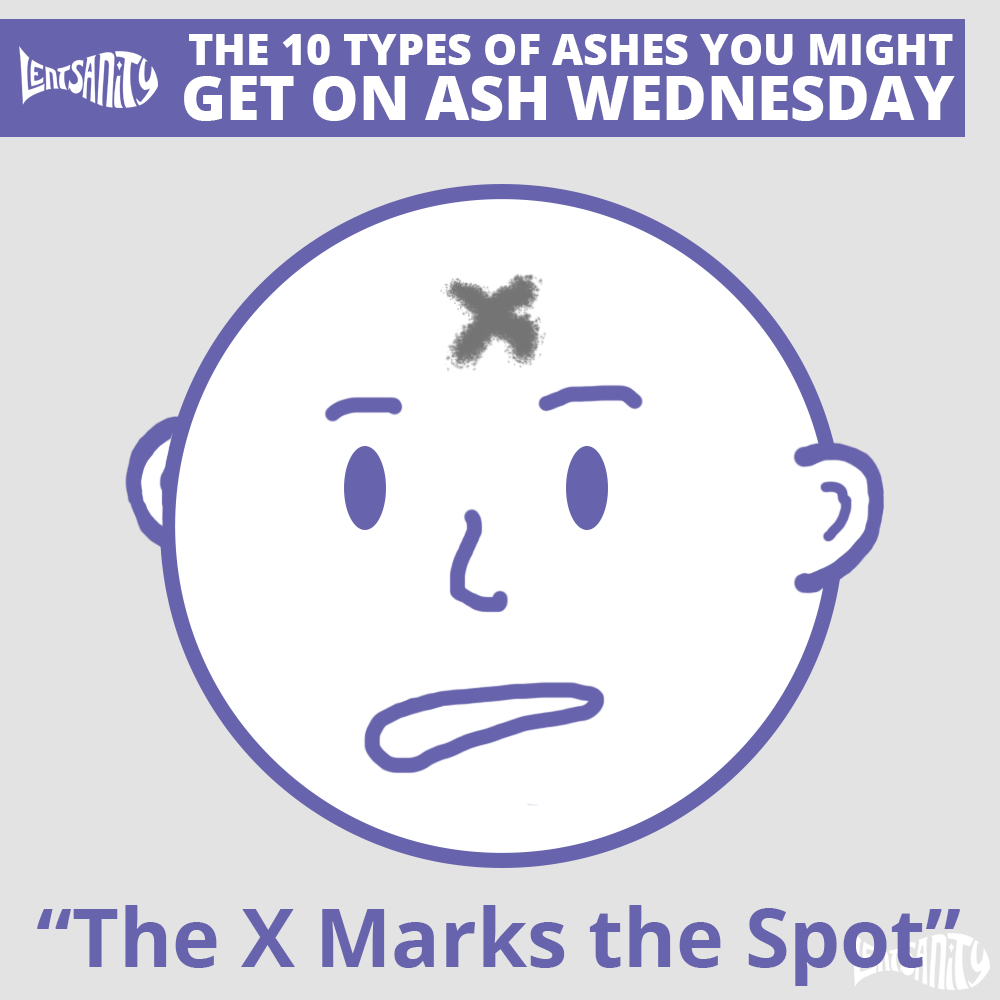
The “Unsolved Mystery”
Any ash type can turn into The Unsolved Mystery, so long as it is concealed by one’s bangs.

The “Missing Link”
An extremely light application of ash. Unless explicitly looking for the ashes, observes may miss them. The Missing Link finds its way to foreheads when older ashes are used, forehead skin is dry, or when one absent-mindedly wipes their brow.
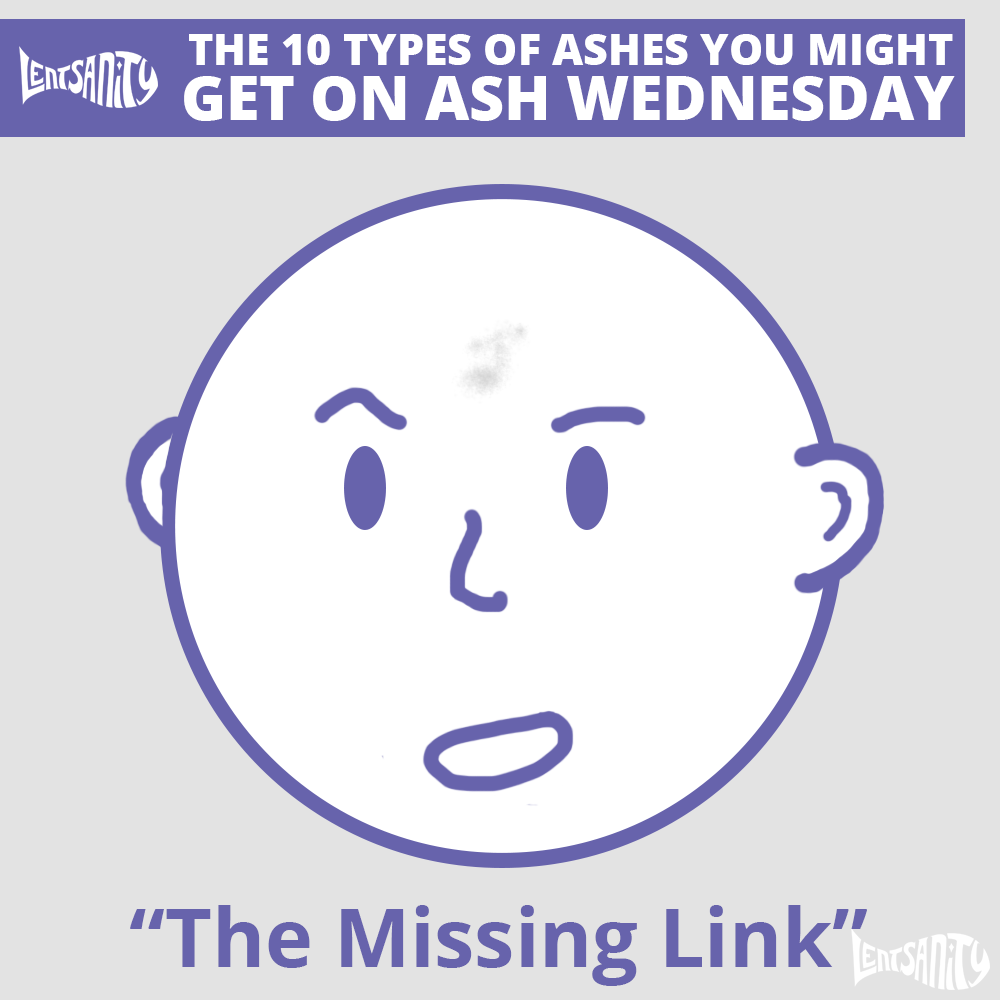
The “Loomster”
Closely related to the Double Wide and the Simba, this variety’s most distinctive feature is its prominent vertical line of ash. A complementary horizontal line may or may not be present in all sightings. So named because it brings to mind the longest french fry in an order, particularly on a day of fasting.
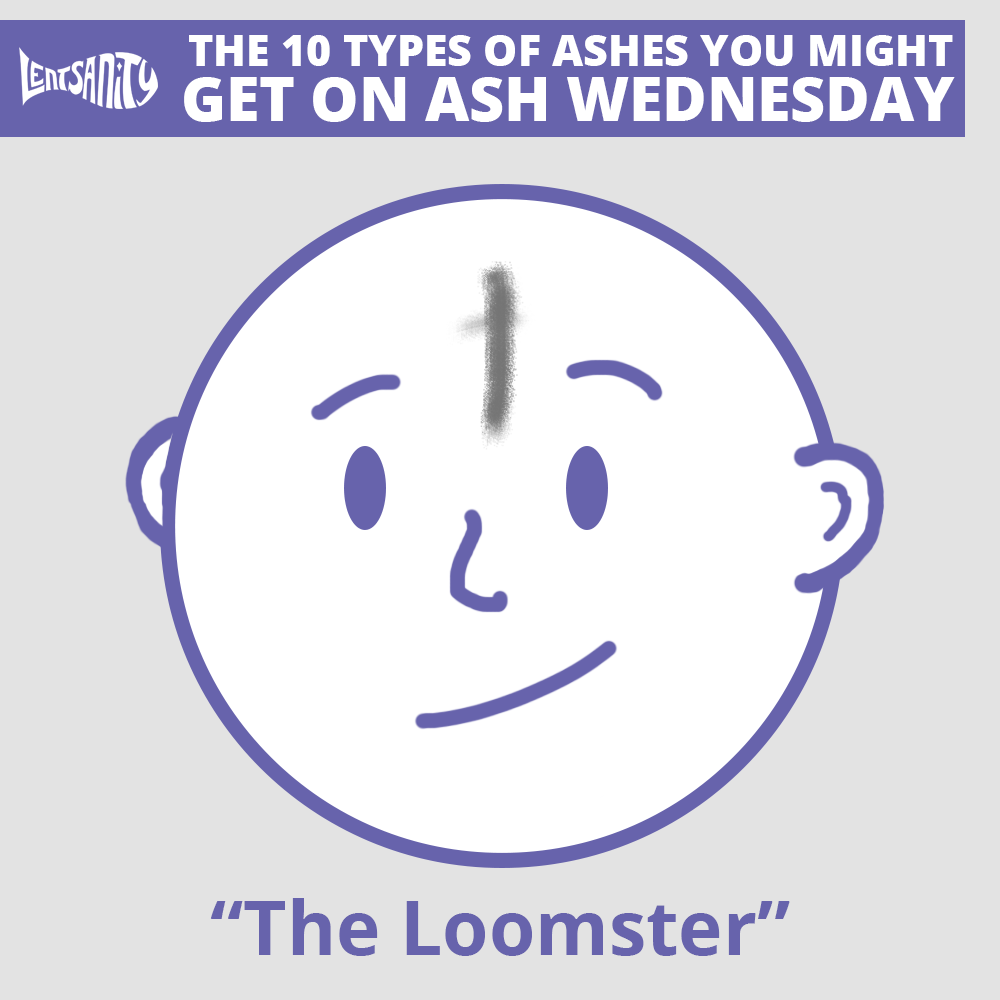
The “Been There, Done That”
Rarely seen in the wild, this ash type is of particular interest for its resemblance to a check mark. Best chances for a sighting are Masses and ash services later in the day, when the chances of fatigue for the one applying ashes are at their highest, and your forehead is confused for their to-do list.
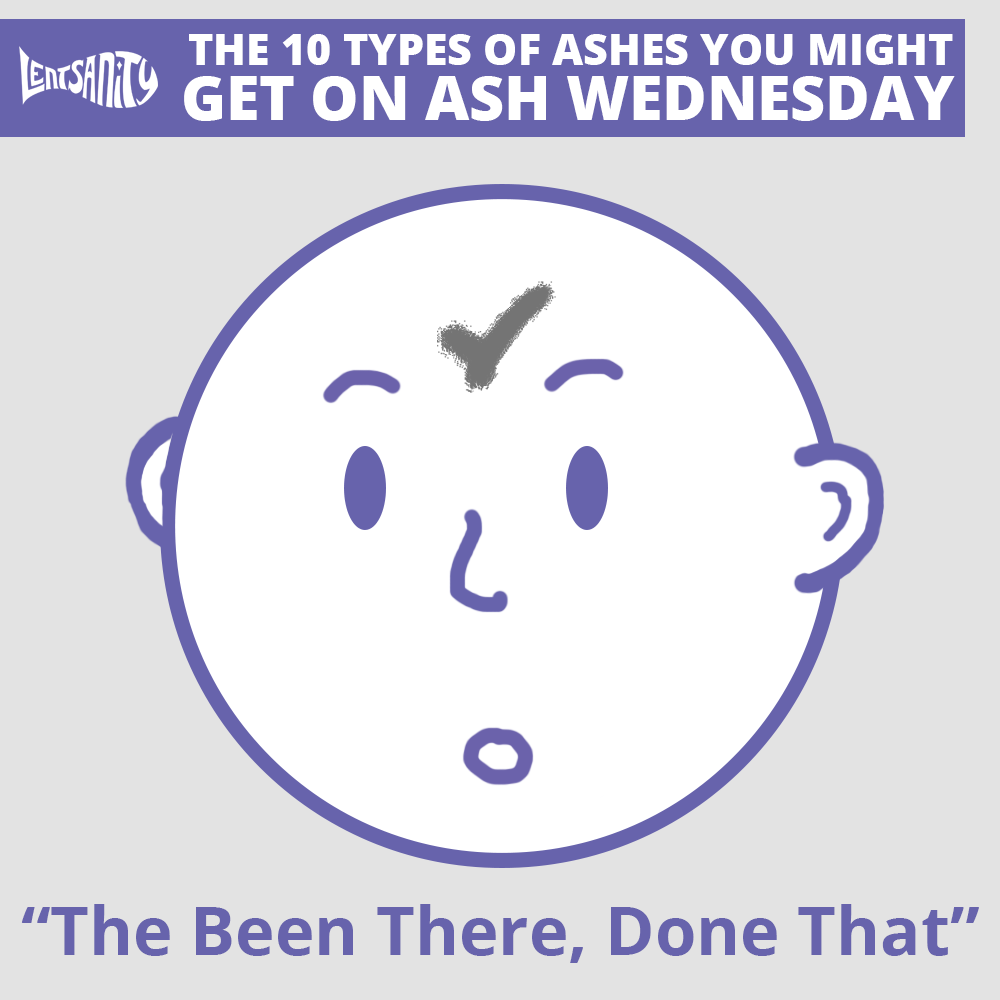
#Ashtag
Post your ashes on twitter with #ashtag and a classification of your ash type. You can use one of ours or make up your own. We’ll retweet our favorites.

